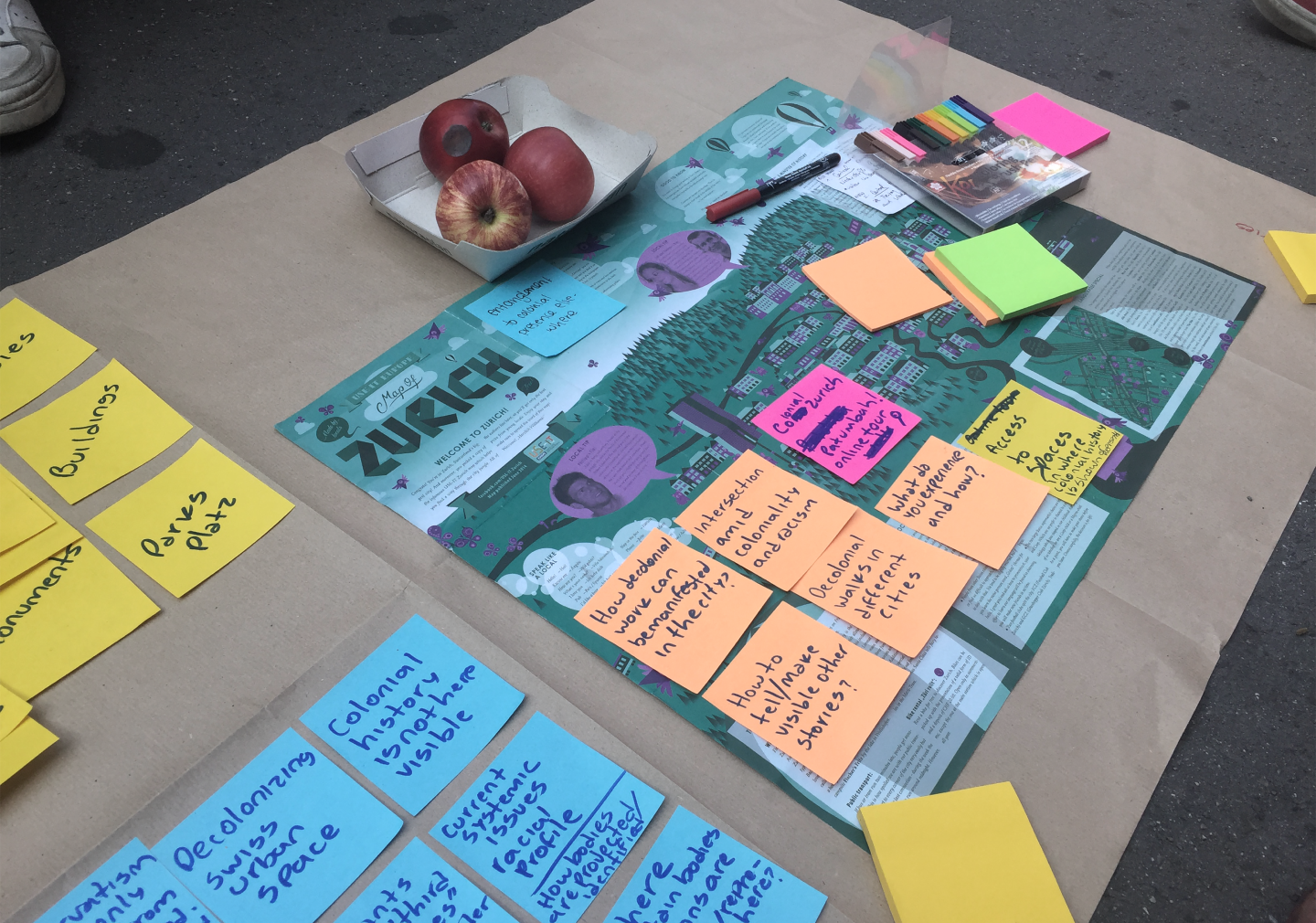Method and theory
With this format we wanted to foster a communal and diverse space to explore first and foremost social dynamics within the city by describing situations and experiences, tracing categories, establishing connections, and imagining possible interventions in the public space. Our goal was to gather a diverse group of people and brainstorm on decolonial and anti-racist strategies.
About the workshop
After a short introduction on the current stage of the project, we set up a place for an extensive brainstorming session. We wanted to name zones of exclusion and discrimination and gather answers on how to resist them. Taking another map of Zurich as the starting point, we followed the life experiences of the participants and explored diverse dynamics and power relations they have experienced living in the city.
Since some of the participants were actively involved and engaged in other Swiss collectives and/or researching related topics around colonial history, different forms of discrimination, migratory policies, cultural integration as well as social and racial justice endeavors, we expanded the talk to the situation in other cities like Basel or Geneva. We addressed systematic exclusion and discrimination in social housing, the health care system, education, and work accessibility.
Instead of looking for decolonial strategies right away, we named and analyzed different situations, where people had experienced discrimination, racism, and other power dynamics to foster exchange on possible strategies and forms of resistance.
These questions guided us:
Where are certain bodies/persons visible and represented in Zurich?
What kind of integration is visible, where and how?
How do we talk respectfully about integration and how can we differentiate it from assimilation demands?
In terms of exclusion, what exclusion is visible and where is it visible?
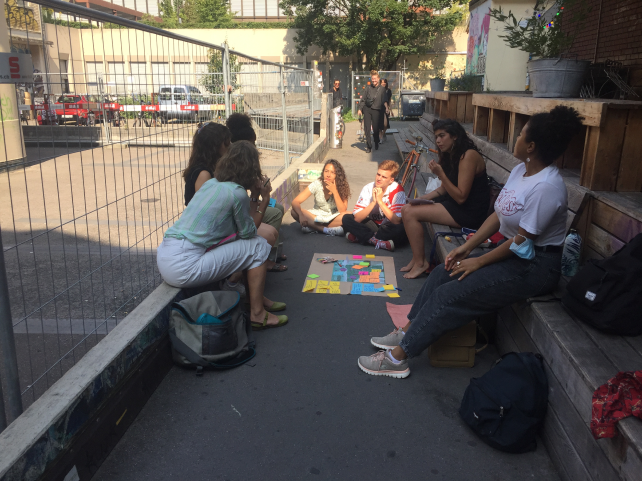
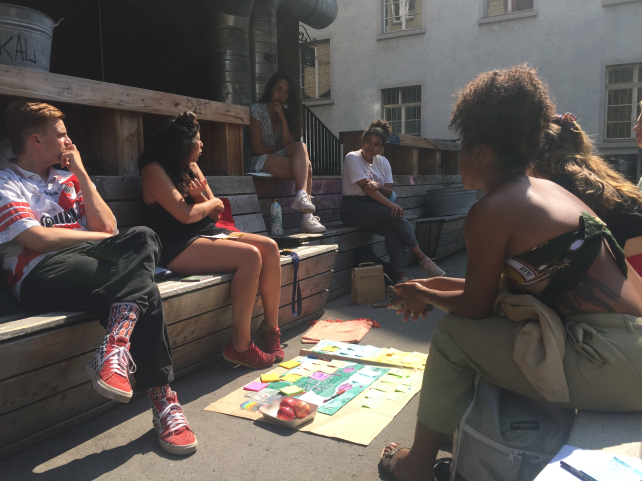
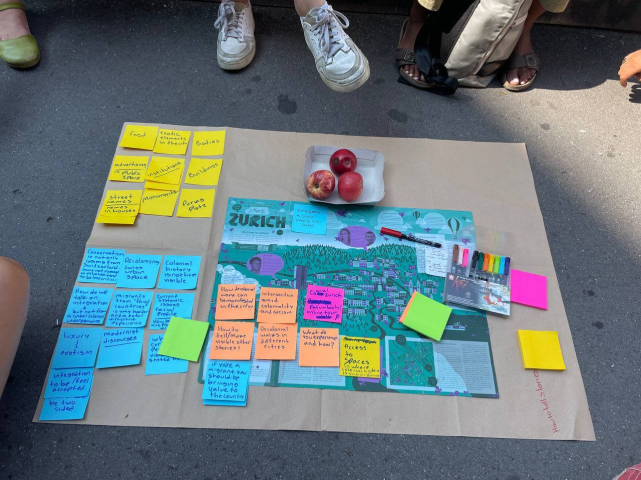
- Where are certain bodies/persons visible and represented in Zurich?
- How do we talk about integration but not from a colonial-lineal understanding?
- In terms of exclusion, what is visible and where?
- About integration, what is visible, where and how?
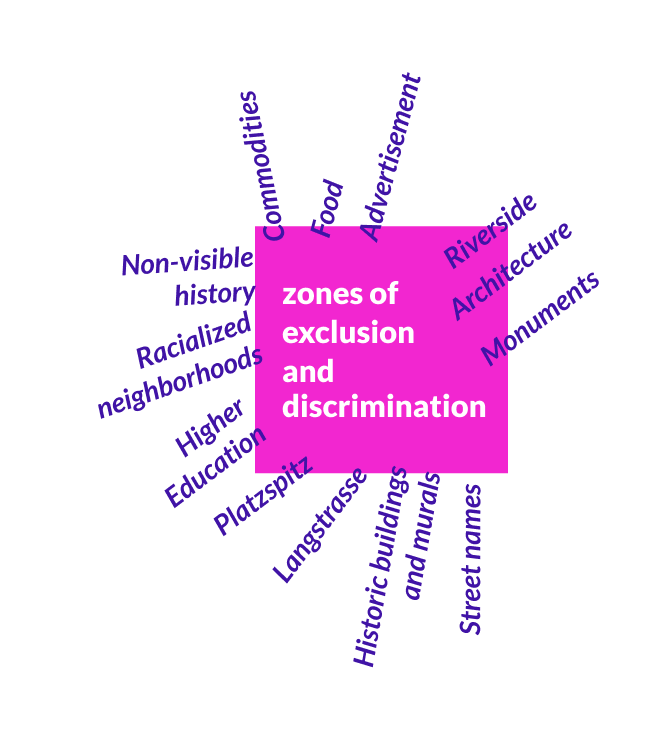
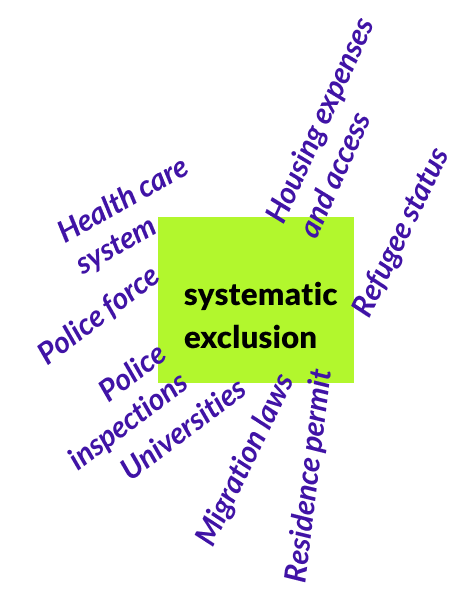
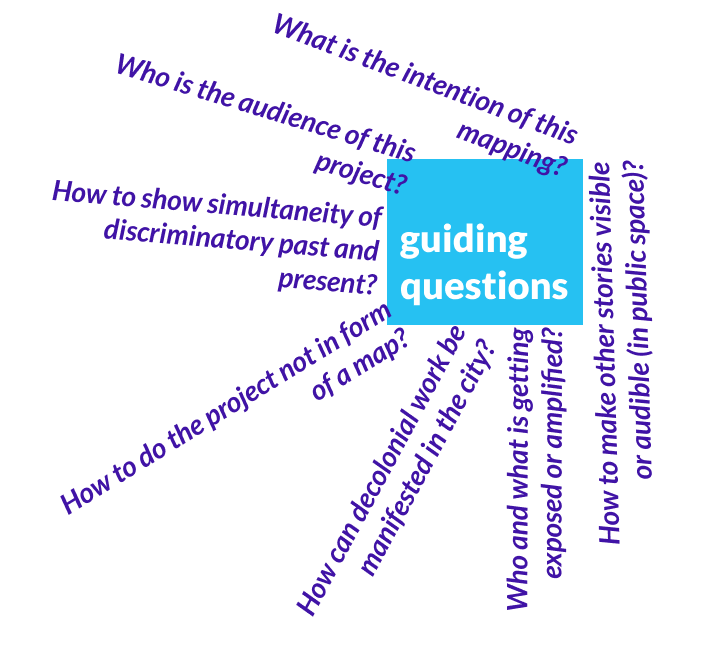


- «Give relevance to the gesture of walking instead of mapping»
- «we can screen images in our bodies»
- «sensitive maps?»
- «What is not visible?»
- «Who is the audience of this project?»
- «Let’s document this and build an archive»
- «to write on the pavement»
- «collective participation»
- «What type of outcome do we imagine?»
- «It can be a website»
- «What about using public space?»
- «Can it be an exhibition?»
- «How can we engage these ideas with the public?»
- «Layers and how the past is embedded in the present»
- «How to activate a discussion/action from pedestrians?»
- «we can document the passage of time»
